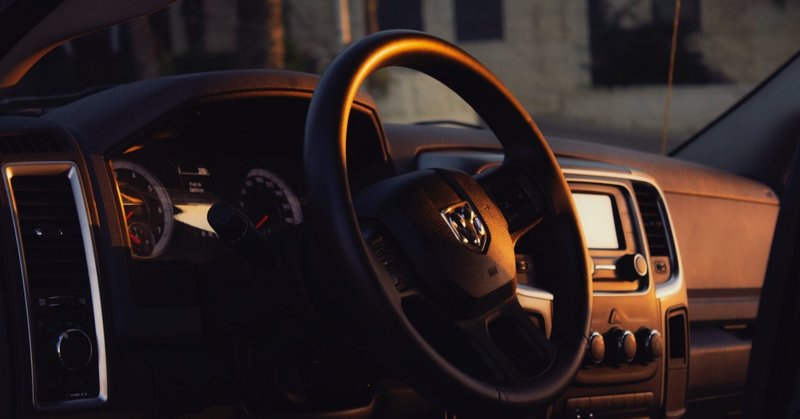
Lv.3 Travel B_Self-Driving Car
It's late, pitch-dark(非常に暗い), and a self-driving car winds down a narrow country road. Suddenly, three hazards appear at the same time. What happens next? Before it can navigate this onslaught(大量)of obstacles, the car has to detect them – gleaning(少しずつ収集する)enough information about their size, shape, and position, so that its control algorithms(アルゴリズム)can plot(計画する)the safest course. With no human at the wheel, the car needs smart eyes, sensors that’ll resolve(解像する)these details– no matter the environment, weather, or how dark it is– all in a split-second(ほんの一瞬). That’s a tall(大変な)order, but there’s a solution that partners(組む)two things: a special kind of laser-based probe(装置)called LiDAR, and a miniature version of the communication technology that keeps the internet humming(ブンブンいう), called integrated photonics(光集積).
To understand LiDAR, it helps to start with a related technology–radar. In aviation(航空学), radar antennas launch pulses(波動)of radio or microwaves at planes to learn their locations by timing how long the beams take to bounce back. That’s a limited way of seeing, though, because the large beam-size can’t visualize fine(細かい)details.
In contrast, a self-driving car’s LiDAR system, which stands for Light Detection and Ranging, uses a narrow invisible infrared(赤外線の)laser. It can image features as small as the button on a pedestrian’s shirt across the street. But how do we determine the shape, or depth, of these features? LiDAR fires(発射する)a train(連続)of super-short laser pulses to give depth resolution(解像度). Take the moose(ヘラジカ)on the country road. As the car drives by, one LiDAR pulse scatters off the base of its antlers(枝角), while the next may travel to the tip of one antler before bouncing back. Measuring how much longer the second pulse takes to return provides data about the antler’s shape. With a lot of short pulses, a LiDAR system quickly renders(与える)a detailed profile(輪郭).
The most obvious way to create a pulse of light is to switch a laser on and off. But this makes a laser unstable and affects the precise timing of its pulses, which limits depth resolution. Better to leave it on, and use something else to periodically(周期的に)block the light reliably(期待通りに)and rapidly. That's where integrated photonics come in.
The digital data of the internet is carried by precision-timed pulses of light, some as short as a hundred picoseconds(1兆分の1秒). One way to create these pulses is with a Mach-Zehnder modulator(変調器). This device takes advantage of a particular wave property, called interference(干渉). Imagine dropping pebbles(小石)into a pond: as the ripples(波紋)spread and overlap, a pattern forms. In some places, wave peaks(最大出力)add up to become very large; in other places, they completely cancel out(帳消しにする). The Mach-Zehnder modulator does something similar. It splits waves of light along two parallel arms and eventually rejoins(再接合する)them. If the light is slowed down and delayed in one arm, the waves recombine out of sync(同調)and cancel, blocking the light. By toggling(二つの状態を交互に切り替える)this delay in one arm, the modulator acts like an on/off switch, emitting pulses of light. A light pulse lasting a hundred picoseconds leads to a depth resolution of a few centimeters, but tomorrow’s cars will need to see better than that. By pairing the modulator with a super-sensitive(感度が高い), fast-acting light detector(検波器), the resolution can be refined(向上させる)to a millimeter. That’s more than a hundred times better than what we can make out with 20/20 vision, from across a street.
The first generation of automobile LiDAR has relied on complex spinning assemblies(組み立て部品)that scan from rooftops or hoods(ボンネット). With integrated photonics, modulators and detectors are being shrunk to less than a tenth of a millimeter, and packed into tiny chips that'll one day fit inside a car’s lights. These chips will also include a clever variation on the modulator to help do away with moving parts and scan at rapid speeds. By slowing the light in a modulator arm only a tiny bit, this additional device will act more like a dimmer(車のヘッドライトを下向きにするスイッチ)than an on/off switch. If an array(多様な)of many such arms, each with a tiny controlled delay, is stacked(積み重ねる)in parallel, something novel can be designed: a steerable(操縦可能な)laser beam. From their new vantage(位置), these smart eyes will probe and see more thoroughly than anything nature could’ve imagined– and help navigate any number of obstacles, all without anyone breaking a sweat(体を激しく使う)– except for maybe one disoriented(方向感覚を失った)moose.
What happens when self-driving cars encounter an unavoidable accident? How does the car choose who to protect? Explore the ethical dilemma(ジレンマ)of self-driving cars with this thought experiment.
この記事が気に入ったらサポートをしてみませんか?
